Small Press Expo (or SPX) nonprofit created in 1994 to promote artists and publishers who produce independent comics. It’s mission is to “To provide a forum to showcase new and emerging talent in the fields of comics, graphic novels and political cartooning”. In the spirit of this mission, the Comics Beat has conducted a series of interview with some of the phenomenal cartoonists in attendance at this year’s Small Press Expo. We hope that these interviews will improve our understanding of these creators voices, techniques, interests and influences.
In this fourth SPX 2017 interview, we talked with Kate Lacour. Kate is a comic artist and art therapist based in New Orleans. She’s been doing two very interesting short comics over at Study Group Comics, one of which we showcased earlier this year. She gracefully accepted to talk with me about her two series, Vivisectionary & The Disciple as well as her career as an art therapist.
—
Philippe Leblanc: For those readers who may not be familiar with you and your work, can you tell us a little bit about yourself?
Kate Lacour: A description I’ve heard applied to my work is “body horror”, and it’s true that I draw a lot of anatomy, a lot of grotesquery. There’s also a lot of genitalia that makes it in there. Yet, I think you’d be hard-pressed to find anyone who experiences my comics as scary or erotic. I think the actual content tends to be centered more around neurosis, exploration and spiritual exertion. I tend to see those things unfolding in the body, and doing so in a disorienting or frightful way.
I strive to draw realistically, and to present a convincing but otherworldly experience. I also work hard to draw outside my personality’s comfort zone, so I have done a number of comics that deal with God, with shame, with grief, the kind of thing that’s difficult to integrate into life in society and in consensus reality.
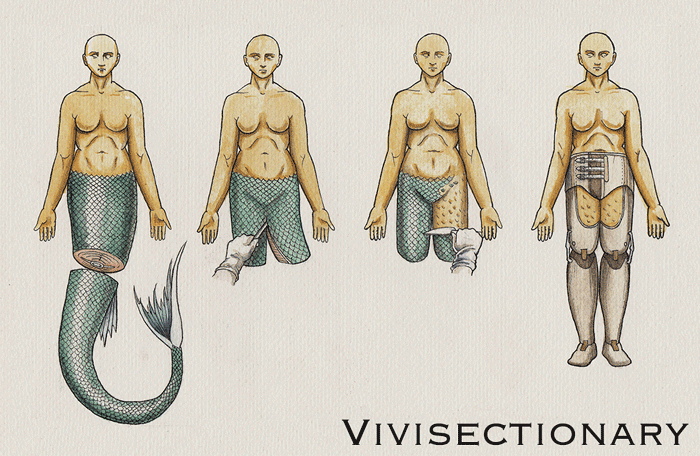
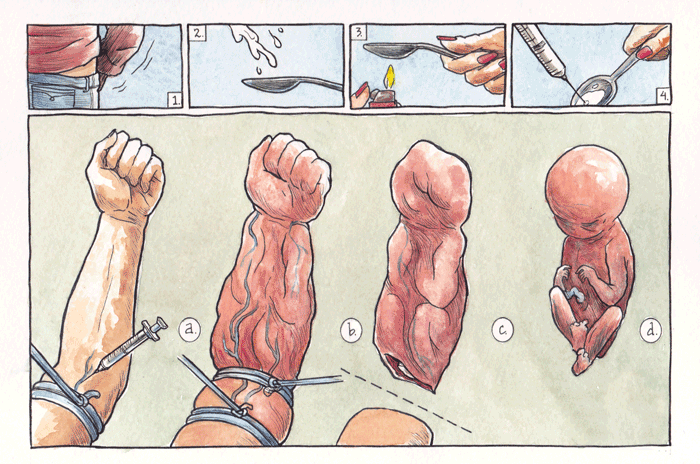
PL: You’ve been working on two ongoing series over at Study Group Comics. The first one is Vivisectionary, a sort of fantasy medical illustration anthology focusing on body horror, transformation and, for lack of a better term, poetry. I’m curious to know what prompted this series and what you wish to accomplish with Vivisectionary?
KL: As a young child, I got an intense feeling of joy from the dioramas at the Natural History Museum, and from creating my own tableaux using toys and objects. The way the scene seems to contain a little world, a story that’s static and self-contained, yet mysterious… it gave me almost an erotic thrill, yet it was also somehow soothing. Vivisectionary is loosely built around the idea of narrative science diagrams, with the idea of showing a logical progression within an illogical schema. At its best, I hope it can evoke some of that cozy, mysterious diorama energy.
PL: You’ve released Vivisectionary in print format and it’s currently available on your Etsy page. I was surprised to see it’s available in different scents. Why did you want this comic to be scented?
KL: I’m afraid that’s not entirely true! I noticed that “scent” was offered as a product listing option on etsy and I couldn’t resist adding some imaginary odor profiles, like “wet asphalt” and “christmas tree” and “old pillow”. The olfactory bulb is so closely linked to the amygdala and hippocampus, you can powerfully evoke memories and emotions with the right scent. It would be wonderful if I actually could coordinate smells to my comics and give them that added depth, the way music can turn half-baked poetry into really evocative lyrics.
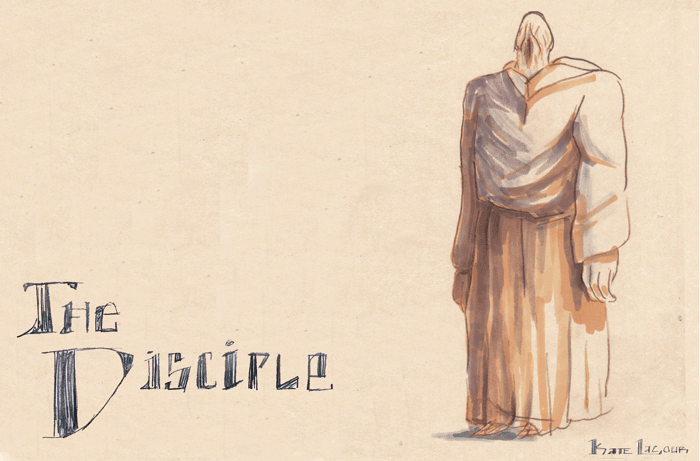
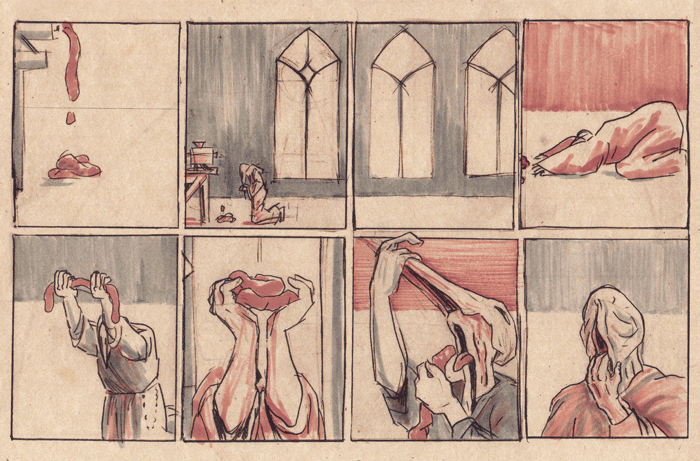
PL: Your second series with Study Group Comics is The Disciple, a narrative experiment using similar elements as Vivisectionary (body horror, fantasy) that begins with a religious ritual taking on extraordinarily grotesque proportions. Each new page extends your narrative threads and changes your colour scheme ever so slightly.
KL: The Disciple is experimental in the most literal sense- it’s completely unplanned, and I just grope my way through as quickly and thoughtlessly as possible. I have a hard time being intuitive, and blundering through the process is a way for me to remove some of my control. I feel like the magic happens when you’re able to hand over the wheel, creatively. I really see the hand of God in there, along with an interesting mishmash of the personality’s fears and desires. That’s ultimately the theme of the comic itself: this being’s spiritual inadequacy, his inability to comprehend or trust the forces he’s trying to surrender to. And from that flows all the degrading and grotesque and sublime things he’s subject to.
PL: I’ve noticed you’ve used a 2 by 4 panel grid pretty consistently (apart from a few full page spreads). I’m wondering why you’ve settled for such a grid. Was this the best way to depict your story?
KL: For me, the grid is a simplification tool. It allows me to eliminate a few of the overwhelming choices available to me as a cartoonist. Frank Santoro introduced me to the idea. When I’m using a rigid grid of same-sized semi-squares, as I do in The Disciple and Incision, I’m hoping the grid will function like a metronome, that the panels will be read at an even pace and the story will unfold like a slideshow. I also love how, with the right coloring, the page itself can look like a window.
PL: I’m fascinated by your use of colour in The Disciple, It seems you’re mixing colouring methods (markers, pencils) and are managing to find a very nice flow to the each methods. How do you approach colours in your work?
KL: That’s a happy accident. I’ve tried switching up my drawing materials and process frequently, groping for the right medium for each phase of the story. In the narrative, the main character has to pass through different realms and physical forms. I try out new techniques for each phase, and deliberately choose awkward coloring processes- like pencils done over multiple Xeroxes followed by marker. I lose a certain amount of beauty, but it opens up the possibility of surprise. Since I don’t know what’s going to happen in the story week by week, it’s essential to make room for things to emerge spontaneously, even if that means being a little ugly.
PL: In addition to your comics work, you’re centering art in your career in a completely different manner. You’re an art therapist and the co-founder of the NOLArts Learning Center, a not-for-profit organization which creates opportunities for young people with autism and other special needs to engage with the New Orleans cultural community through creative projects, performances and events. I’m curious to know how comics and art therapy intertwined in your professional path and how you got involved in this initiative?
KL: I’m an art therapist by training. I’m a little autistic, and throughout my life, art has been this really essential line of connection to the outside world. So it seemed important to me to try to extend that lifeline to other people, especially people with more difficulty than I have had. Doing art and identifying as a creative person is a powerful way for people with challenges to seize some human dignity, and to be seen.
PL: It seems like this kind of work would be challenging but highly rewarding. Have you been able to identify some successes you wish to build on with the NOLArts Center in the future?
KL: The STOMP Troopers is our flagship project. Here in New Orleans, we have a full month of Mardi Gras parades, each with its own theme and following. There’s a wonderful sci-fi art one called Chewbaccchus, which is sort of like a nerdy, drunken Burning Man. Parade. It’s a funky, anything-goes atmosphere, a great realm for teens with autism to contact the cultural community. So we take 2-3 months of weekly workshops to guide a group of 15 teens through the whole process of costume and prop creation, they make drums out of found materials like trash cans, and we have local professional jazz musicians teach them. There’s a lot of team-building and desensitization to noise required. At the end, they are able to actually parade and get to be part of this incredible, wild artistic conflagration. There’s a tremendous outpouring of acceptance and positive attention from the crowd. If you’re someone who struggles to fit in, to communicate, to care for themselves, especially as an adolescent… that’s huge.
If anyone reading wants to get involved or learn more, the project was recently the subject of a TED talk and we are running a GoFundMe :)
PL: Do you have any new comics or material you’re bringing to SPX? If so, can you tell us a little bit more about them/it?
KL: Yes! I’m very excited to debut Vivisectionary III, which continues the theme of narrative diagrams, and focuses largely on bodies, sex and reproduction.
PL: And finally, what do you want readers to take with them once they’ve finished reading your comics?
KL: Personally, the art that affects me most is intimate, raw and mysterious, the kind of images and stories that get under my skin and agitate my imagination. It doesn’t matter if it’s pretentious or unattractive. That’s what I aspire to- comics that stick in the reader’s mind and take on their own little life there.
—
You can follow Kate Lacour’s work on her website or follow her on Twitter. You can also buy her work over at her online store. Her comics Vivisectionary and The Disciple updates frequently on the Study Group Comics website.
She will be at SPX this weekend at table H8-9 with her latest issue of Vivisectionary and other comics. She’s looking forward to meeting you!
Here is Kate talking about the mission of the NOLArts Learning Center. You can also follow the work of the STOMPTroopers online as well and contribute to their GoFundMe page


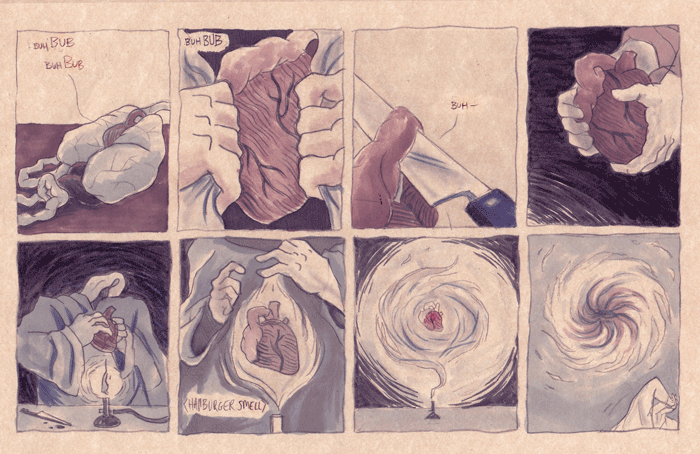
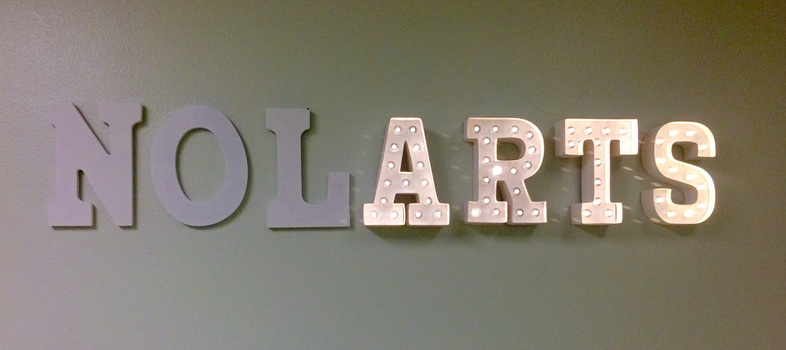
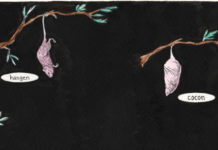
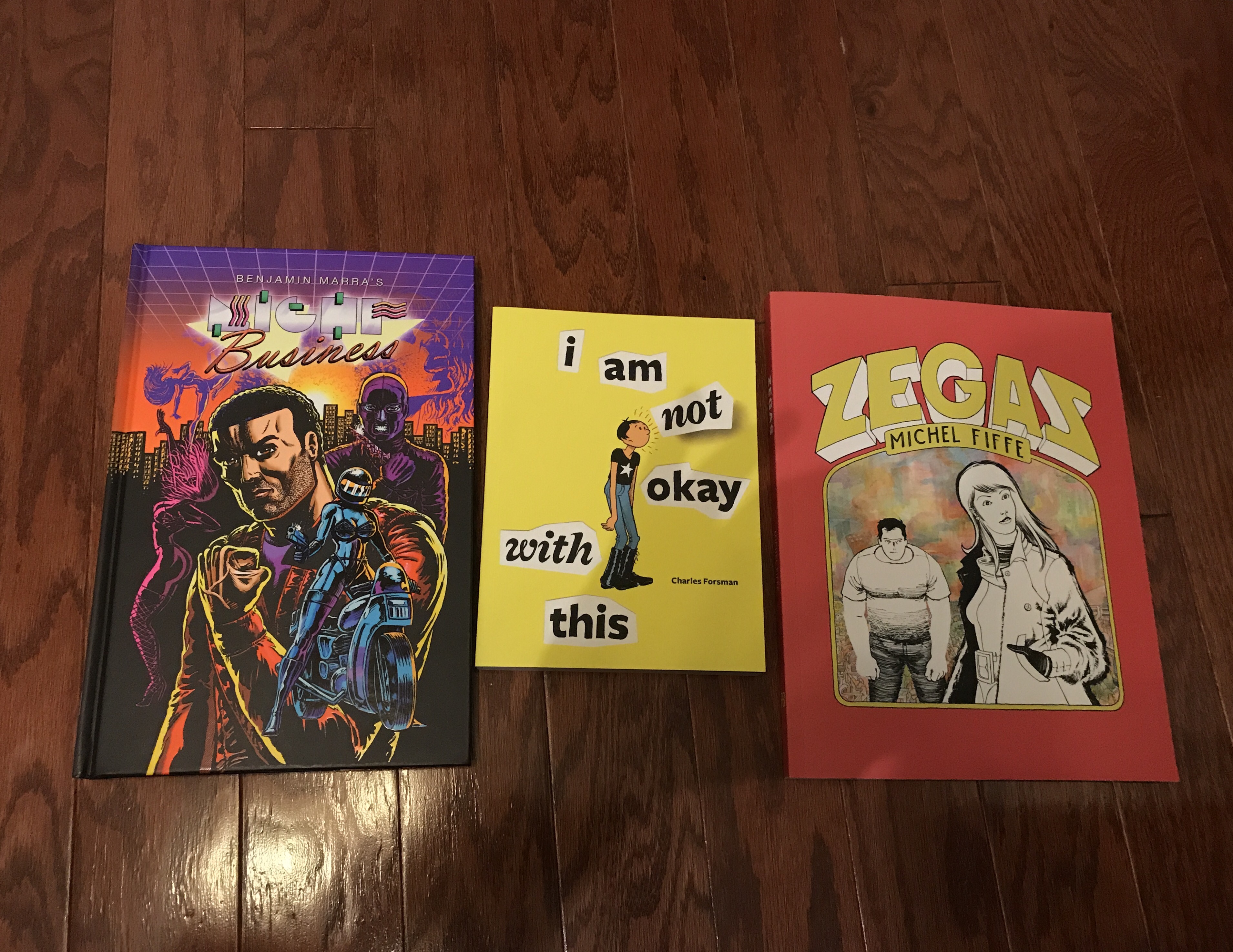




the credits at the end are half or laura knetzger, not kate lacour
Updated with her actual website. Thanks Opal
Comments are closed.